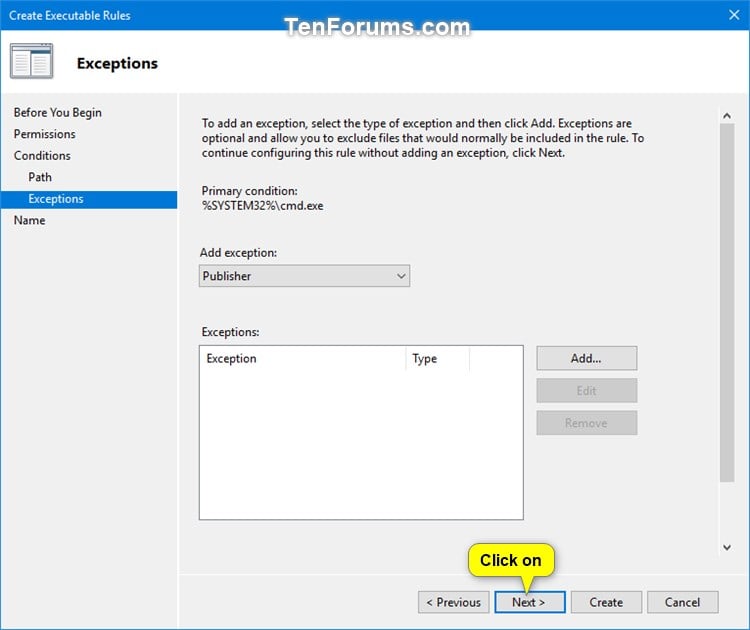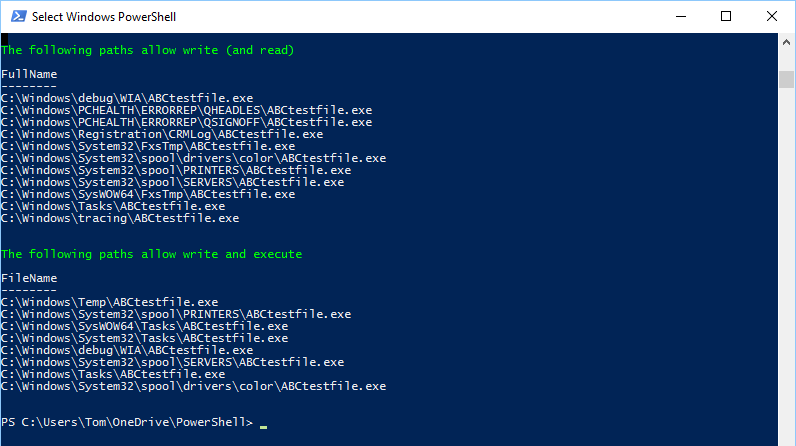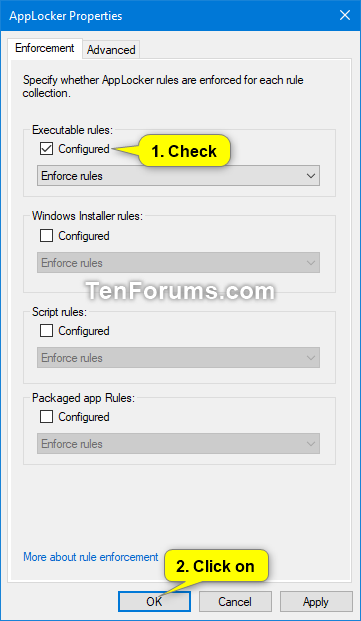
- #Applocker windows 10 professional missing how to
- #Applocker windows 10 professional missing full
- #Applocker windows 10 professional missing software
To configure a single app to launch automatically when the user signs in, include rs5:AutoLaunch="true" after the AUMID or path.

For example, Internet Explorer 64-bit has a dependency on Internet Explorer 32-bit, so you must allow both "C:\Program Files\internet explorer\iexplore.exe" and "C:\Program Files (x86)\Internet Explorer\iexplore.exe".
If an app has a dependency on another app, both must be included in the allowed apps list. #Applocker windows 10 professional missing full
For desktop apps, you need to specify the full path of the executable, which can contain one or more system environment variables in the form of %variableName%.
#Applocker windows 10 professional missing how to
Learn how to get the AUMID, or get the AUMID from the Start Layout XML.
For UWP apps, you need to provide the App User Model ID (AUMID). 
Starting with Windows 10 version 1809, you can configure a single app in the AllowedApps list to run automatically when the assigned access user account signs in. Apps can be Universal Windows Platform (UWP) apps or Windows desktop applications. ĪllowedApps is a list of applications that are allowed to run. The GUID just needs to be unique within this XML file. You can create a GUID using a GUID generator. The profile Id is a GUID attribute to uniquely identify the profile. Users assigned a kiosk profile won't see the desktop, but only the kiosk app running in full-screen mode.Ī lockdown profile section in the XML has the following entries:Ī kiosk profile in the XML has the following entries:
Kiosk profile: Starting with Windows 10 version 1803, this profile replaces the KioskModeApp node of the AssignedAccess CSP.  Lockdown profile: Users assigned a lockdown profile will see the desktop in tablet mode with the specific apps on the Start screen. There are two types of profiles that you can specify in the XML: You can see a full sample version in the Assigned access XML reference. Each section of this XML is explained in this article. You can start your file by pasting the following XML into an XML editor, and saving the file as filename.xml. Multiple config sections can be associated to the same profile.Ī profile has no effect if it's not associated to a config section. Each config section associates a non-admin user account to a default profile Id. Each profile has a unique Id and defines a set of applications that are allowed to run, whether the taskbar is visible, and can include a custom Start layout.Ī configuration xml can have multiple config sections. Let's start by looking at the basic structure of the XML file.Ī configuration xml can define multiple profiles. įor devices running versions of Windows 10 earlier than version 1709, you can create AppLocker rules to configure a multi-app kiosk. Important: To use features released in Windows 10, version 1809, make sure that your XML file references. Configure a display name for the autologon account Automatically launch an app when the user signs in Explicitly allow some known folders when user opens file dialog box Configure an account to sign in automatically Assign group accounts to a config profile Configure a single-app kiosk profile in your XML file The following table lists changes to multi-app kiosk in recent updates. The benefit of a kiosk that runs only one or more specified apps is to provide an easy-to-understand experience for individuals by putting in front of them only the things they need to use, and removing from their view the things they don't need to access. In Windows 10, version 1709, the AssignedAccess configuration service provider (CSP) was expanded to make it easy for administrators to create kiosks that run more than one app. However, the SRP Basic User feature isn't supported on the above operating systems.The use of multiple monitors isn't supported for multi-app kiosk mode in Windows 10.Ī kiosk device typically runs a single app, and users are prevented from accessing any features or functions on the device outside of the kiosk app.
Lockdown profile: Users assigned a lockdown profile will see the desktop in tablet mode with the specific apps on the Start screen. There are two types of profiles that you can specify in the XML: You can see a full sample version in the Assigned access XML reference. Each section of this XML is explained in this article. You can start your file by pasting the following XML into an XML editor, and saving the file as filename.xml. Multiple config sections can be associated to the same profile.Ī profile has no effect if it's not associated to a config section. Each config section associates a non-admin user account to a default profile Id. Each profile has a unique Id and defines a set of applications that are allowed to run, whether the taskbar is visible, and can include a custom Start layout.Ī configuration xml can have multiple config sections. Let's start by looking at the basic structure of the XML file.Ī configuration xml can define multiple profiles. įor devices running versions of Windows 10 earlier than version 1709, you can create AppLocker rules to configure a multi-app kiosk. Important: To use features released in Windows 10, version 1809, make sure that your XML file references. Configure a display name for the autologon account Automatically launch an app when the user signs in Explicitly allow some known folders when user opens file dialog box Configure an account to sign in automatically Assign group accounts to a config profile Configure a single-app kiosk profile in your XML file The following table lists changes to multi-app kiosk in recent updates. The benefit of a kiosk that runs only one or more specified apps is to provide an easy-to-understand experience for individuals by putting in front of them only the things they need to use, and removing from their view the things they don't need to access. In Windows 10, version 1709, the AssignedAccess configuration service provider (CSP) was expanded to make it easy for administrators to create kiosks that run more than one app. However, the SRP Basic User feature isn't supported on the above operating systems.The use of multiple monitors isn't supported for multi-app kiosk mode in Windows 10.Ī kiosk device typically runs a single app, and users are prevented from accessing any features or functions on the device outside of the kiosk app. #Applocker windows 10 professional missing software
Software Restriction Policies can be used with those versions. Windows Server 2008 R2 for Itanium-Based SystemsĪppLocker isn't supported on versions of the Windows operating system not listed above. Windows Server 2019 Windows Server 2016 Windows Server 2012 R2 Windows Server 2012 Policies deployed through MDM are supported on all editions.Policies deployed through GP are only supported on Enterprise and Server editions.Windows versions older than version 2004, including Windows Server 2019: Policies are supported on all editions Windows 10 version 2004 and newer with KB 5024351.

Packaged apps Executable Windows Installer Script DLL The following table shows the Windows versions on which AppLocker features are supported. As of KB 5024351, Windows 10 versions 2004 and newer and all Windows 11 versions no longer require a specific edition of Windows to enforce AppLocker policies Operating system requirements








 0 kommentar(er)
0 kommentar(er)
